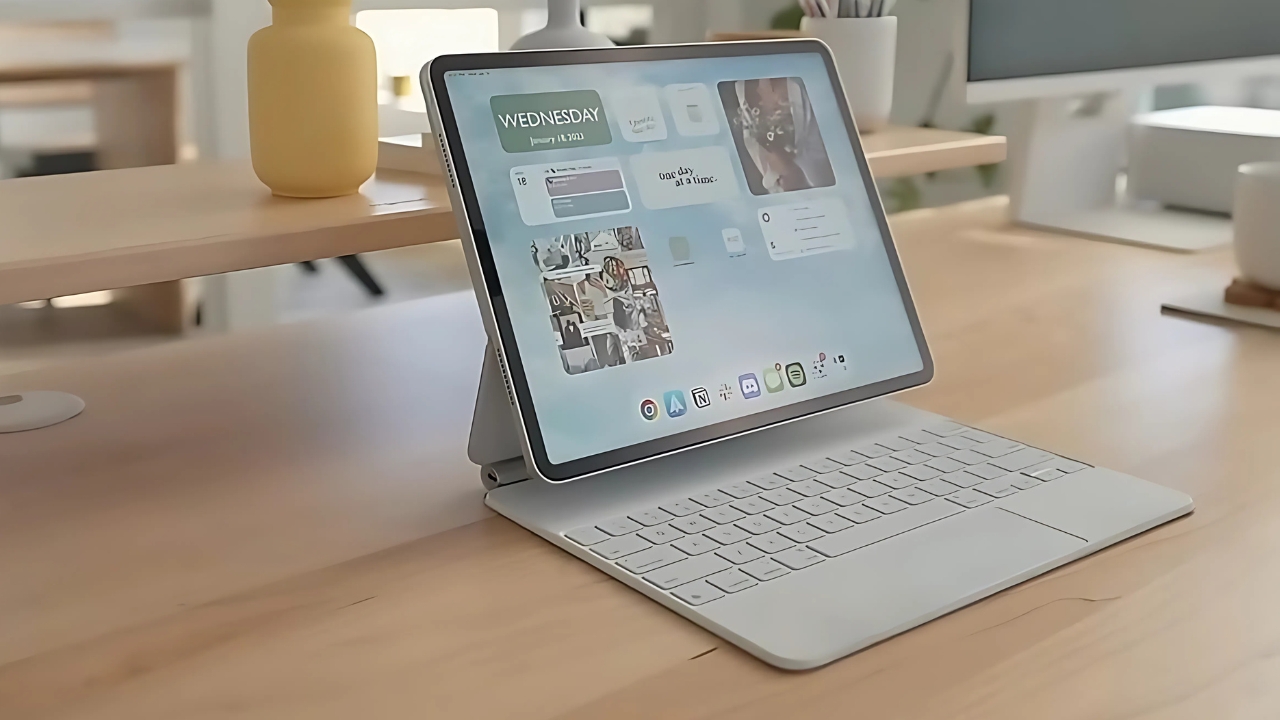iPad : you’re cooking dinner, folding laundry, or taking your evening walk, but instead of missing out on that captivating novel you’ve been reading, your iPad continues the story for you. This isn’t science fiction—it’s one of the most underutilized features that can completely transform how you experience books and written content.
When Your iPad Becomes Your Personal Narrator
The Speak Screen feature turns your iPad into an incredibly sophisticated audiobook narrator, but here’s the thing—it works with virtually any text on your screen. Whether you’re reading through Apple Books, browsing articles, or even checking emails, this feature bridges the gap between traditional reading and listening.
What makes this particularly powerful is how seamlessly it integrates into your daily routine. You can start reading a chapter while sitting down, then continue listening as you move around your home. The transition feels natural because you’re still engaging with the same content, just in a different format.
Setting Up Your Reading Revolution
Getting started is surprisingly straightforward, though many people never discover these settings buried in their iPad’s accessibility options. Head to Settings, then General, and look for Accessibility options. Under Spoken Content, you’ll find Speak Screen waiting to be activated.
Once enabled, a simple two-finger swipe down from the top of any screen starts the magic. Your iPad begins reading whatever content is displayed, whether it’s a novel, news article, or even social media posts. The reading speed can be adjusted to match your preference—some people enjoy a leisurely pace that mirrors natural conversation, while others prefer faster speeds for information consumption.
The voice quality has improved dramatically over the years. Gone are the robotic, monotone narrators of early screen readers. Modern iPad voices, particularly the enhanced ones like Alex, bring surprising emotion and natural inflection to the text. Alex even pauses appropriately for punctuation and can handle complex sentence structures with impressive accuracy.
Beyond Just Convenience
While the hands-free aspect is appealing, this feature opens doors for people who previously struggled with traditional reading. Individuals with dyslexia, visual impairments, or reading comprehension challenges suddenly have access to the same content as everyone else, delivered in a format that works for their needs.
Parents discover that having books read aloud creates shared experiences with their children. Instead of everyone staring at separate screens, families can listen together while engaging in other activities. It transforms reading from a solitary activity into something that can be shared and discussed in real-time.
Students and professionals find that listening to research papers, reports, or study materials while reviewing visual content helps reinforce learning. The combination of visual and auditory input creates stronger memory connections than either method alone.
Maximizing Your Listening Experience
The real transformation happens when you start thinking beyond just books. Having your iPad read morning news briefings while you prepare for the day turns dead time into information time. Long research articles become manageable during commutes or exercise sessions.
For people who travel frequently, this feature eliminates the need to choose between packing physical books or buying separate audiobooks. Your existing library becomes instantly accessible in audio format. The continuity between reading and listening means you never lose your place in the story.
The Speak Selection option provides even more precision. Instead of having entire pages read, you can highlight specific paragraphs or sections that need focus. This proves invaluable when studying complex material or reviewing important passages in business documents.
Practical Applications That Matter
Professional development takes on new dimensions when you can listen to industry articles while commuting. Instead of scrolling through social media during downtime, you can have your iPad read through saved articles from professional publications or research papers relevant to your work.
Language learners find tremendous value in hearing proper pronunciation while following along with text. The combination of visual and auditory input accelerates comprehension and helps with accent development in ways that traditional learning methods struggle to achieve.
Writers and content creators use this feature to hear how their work sounds when read aloud. Many grammatical errors and awkward phrasing become immediately apparent when listening rather than reading silently. It’s like having a proofreading assistant that never gets tired.
Creating the Perfect Environment
The beauty of this transformed reading experience lies in customization. Reading speed, voice selection, and even which types of content get read aloud can all be tailored to individual preferences. Some people prefer faster speeds for news consumption but slower, more theatrical pacing for fiction.
Background noise considerations become important. Unlike traditional audiobooks produced in studios, your iPad is reading in whatever environment you’re in. Finding the right balance between device volume and ambient noise takes some experimentation, but most people quickly develop preferences.
The integration with other iPad features creates powerful combinations. Focus modes can be set to activate when opening reading apps, automatically silencing distracting notifications while enabling the perfect screen reading environment.
The Ripple Effects
Once you experience this seamless transition between reading and listening, it changes your relationship with written content entirely. Books that might have sat unfinished on your nightstand suddenly become companions during daily activities. Complex articles that seemed too time-consuming become accessible during moments that were previously unproductive.
The feature democratizes access to information in ways that weren’t previously possible. Physical limitations, time constraints, or situational factors that once prevented reading no longer create barriers to accessing written content.
This isn’t about replacing traditional reading—it’s about expanding when and how reading can happen. Some passages benefit from visual consumption, while others work beautifully as audio experiences. Having both options available creates a richer, more flexible relationship with written content.
Your iPad transforms from a simple reading device into an adaptive content delivery system that molds itself to your lifestyle, schedule, and needs. That’s the real transformation—not just how you read, but when, where, and how often you can engage with the written word.
ALSO READ: Xperia 1 VII Setbacks: How Defects Could Shape Your Phone Purchase Decision
